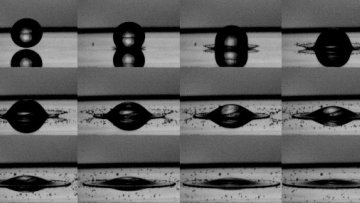11:00
Not having rational roots is diophantine."
Abstract
"We give a diophantine criterion for a polynomial with rational coefficients not to have any
rational zero, i.e. an existential formula in terms of the coefficients expressing this property. This can be seen as a kind of restricted
model-completeness for Q and answers a question of Koenigsmann."
16:00
Quasi-isometric rigidity and higher-rank symmetric spaces
Abstract
I will discuss a couple of techniques often useful to prove quasi-isometric rigidity results for isometry groups. I will then sketch how these were used by B. Kleiner and B. Leeb to obtain quasi-isometric rigidity for the class of fundamental groups of closed locally symmetric spaces of noncompact type.
Axion Decay Constants Away From the Lamppost
Abstract
It is unknown whether a bound on axion field ranges exists within quantum gravity. We study axion field ranges using extended supersymmetry, in particular allowing an analysis within strongly coupled regions of moduli space. We apply this strategy to Calabi-Yau compactifications with one and two Kähler moduli. We relate the maximally allowable decay constant to geometric properties of the underlying Calabi-Yau geometry. In all examples we find a maximal field range close to the reduced Planck mass (with the largest field range being 3.25 $M_P$). On this perspective, field ranges relate to the intersection and instanton numbers of the underlying Calabi-Yau geometry.
Algebraic models for rational equivariant cohomology theories
Introduction to Birational Anabelian Geometry and the Section Conjecture
14:15
The topology of area-minimizing surfaces in manifolds of non-negative curvature
Abstract
Work of Schoen--Yau in the 70's/80's shows that area-minimizing (actually stable) two-sided surfaces in three-manifolds of non-negative scalar curvature are of a special topological type: a sphere, torus, plane or cylinder. The torus and cylinder cases are "borderline" for this estimate. It was shown by Cai--Galloway in the late 80's that the torus can only occur in a very special ambient three manifold. We complete the story by showing that a similar result holds for the cylinder. The talk should be accessible to those with a basic knowledge of curvature in Riemannian geometry.
Virtual signed Euler characteristics and the Vafa-Witten equations
Abstract
I will describe 5 definitions of Euler characteristic for a space with perfect obstruction theory (i.e. a well-behaved moduli space), and their inter-relations. This is joint work with Yunfeng Jiang. Then I will describe work of Yuuji Tanaka on how to this can be used to give two possible definitions of Vafa-Witten invariants of projective surfaces in the stable=semistable case.



